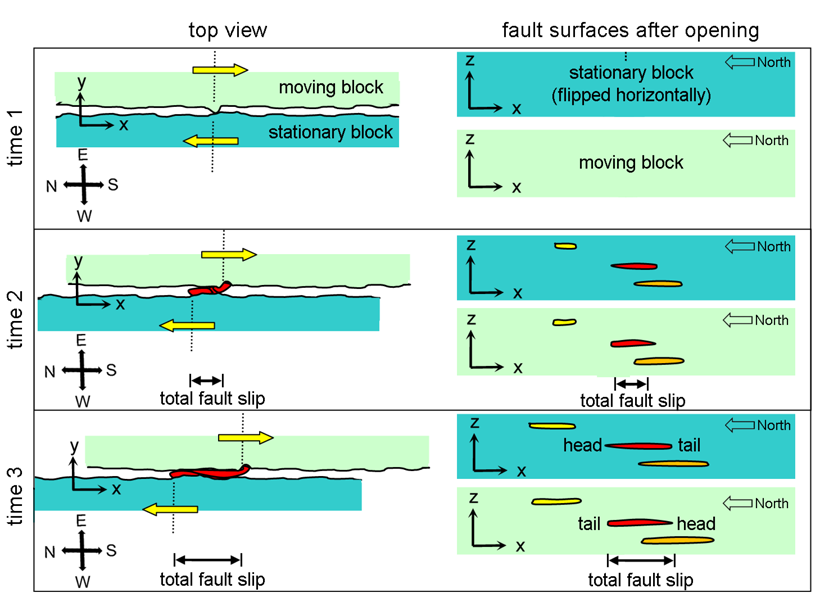Source: AGU Advances
Continental transform fault system seismicity is variable in space and time. Geometrical complexity appears to be a factor, with more mature faults showing fewer small earthquakes, and less complex slip. Such analysis may allow inferences on fault loading, and how wholesale ruptures propagate. Laboratory studies of roughness evolution are usually confined to small sample size and slip, possibly complicating scaling to nature. Brodsky et al. [2020] discuss a new set of experiments on meter scale laboratory faults, documenting how particles are sheared off and then form grooves while being ground up as gouge. The patterns of these grooves were found to depend on the normal stress pushing the fault together. This points to new ways of interpreting the roughness of exhumed fault zones for the stress conditions under which they formed and evolved. Such work might significantly enhance our understanding of plate boundary evolution.
Citation: Brodsky, E., McLaskey, G., & Ke, C-Y. [2020]. Groove Generation and Coalescence on a Large-Scale Laboratory Fault. AGU Advances, 1, e2020AV000184. https://doi.org/10.1029/2020AV000184
—Thorsten Becker, Editor, AGU Advances
Text © 2020. The authors. CC BY-NC-ND 3.0
Except where otherwise noted, images are subject to copyright. Any reuse without express permission from the copyright owner is prohibited.

